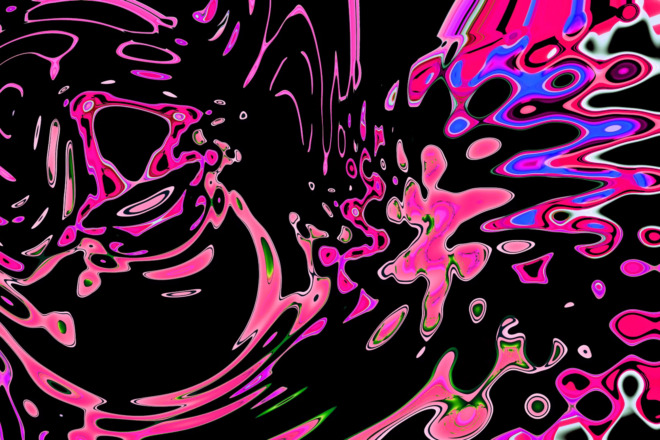From the time prehistoric people carved drawings on cave walls, specific strokes and symbols have conveyed a particular tone or mood. By the 15th century, movable type and the printing press were two of the greatest human inventions, leading to the first known book created in 14th-century Korea and widespread adoption throughout Europe. From that point on, people created different typefaces for various reasons and uses. Some typefaces were designed for clarity, some for formality and more recently for digital use — like Century Gothic.
Designers created Century Gothic — a geometric sans-serif font — specifically as a digital typeface. People have never used it as a physical typeface. This makes it somewhat unique out of the more common fonts found in existence today.
But how do you use it, where have you seen it before, and how can it change your branding? Let’s dive in and examine this unique font.
Origin
Century Gothic is relatively new, having only been released in 1991 by Monotype Imaging.
Geometric-style sans serif typefaces, which gained popularity early in the 20th century, inspired Century Gothic. The more recent typeface is based on Sol Hess’s Monotype 20th Century drawing, which designers created between 1936 and 1947.
Sol Hess made his Monotype 20th Century drawing for headlines or larger text displays. Although it is similar to the Futura font, it is shorter and broader. As a result, using it for large blocks of text in a bigger size can be jarring to readers’ eyes.
However, people can still use it for content if they like, as long as they balance the font size for an overall strong look that doesn’t overwhelm the page.
Mechanics of Century Gothic
Century Gothic has some distinctive characteristics that make it recognizable. First, the lowercase “a” and “g” are both single-story in this font — in other words, similar to the way people learn to write these letters as children.
Single-story, as opposed to double-story, is more reminiscent of handwritten text or calligraphy. Two-story letters, however, are more ornate, so we see it as a less formal font.
The “i” and the “j” have thick, round dots to accent them. The font, overall, has a very tall x-height. The font itself is rather wide-set since designers created it specifically as a digital typeface. It also has a distinct geometric design. At the same time, the weight is not as heavy as some fonts created for digital screens.
The font has no serifs — a small line or stroke off of a letter like you’d find with Times New Roman. Century Gothic was created as an alternative to match the widths of ITC Avant Garde. For example, if you set up a document in Century Gothic and then switched all the text to ITC Avant Garde, the fonts would take up the same amount of space and the copy would still fit perfectly.
What Does the Font Imply?
Century Gothic is simple but familiar. As mentioned, some letters have the same appearance as the letters children first learn to write in school, giving the font a warm and welcoming feel.
The font is happy and light-feeling compared to those with heavier strokes. It is also more casual than the Old World typefaces with elegant aesthetics and characteristics.
For one thing, Century Gothic uses the least amount of printer ink. In 2010, the University of Wisconsin-Green Bay even switched its default email system font from Arial to Century Gothic, allowing the school to use 30% less ink and reduce costs. Printer ink could have cost the university around $10,000 per gallon.
Century Gothic could be better for the environment, too. Printer ink and toners contain volatile organic compounds and heavy metals, which are toxic to the environment and human health. The risk of ink leeching water and soil is high when printed paper is thrown away.
However, considering Century Gothic is wider than other fonts, you must use more paper. So, while less ink is needed, more trees get cut down.
Where It’s Commonly Found and Used
You will usually find Century Gothic in movie poster titles. It is also the primary typeface for TV headlines such as House and The Ellen Degeneres Show. Glee, Star Trek: Enterprise, and the James Bond film Casino Royale also use Century Gothic. This font’s simplicity emphasizes the short words in these titles that appear more largely.
Because the Century Gothic typeface mixes high x-height and steady weight, it is easy to read on screen. Most readers can easily read this font on a computer, laptop, or smartphone. Nevertheless, you might struggle to read it if you have poor eyesight, as it isn’t as heavy as some of the other on-screen fonts.
What Should It Be Used As
Since Century Gothic works well as a headline font, you can use it on posters, flyers, websites, or blog headings. This typeface is modern and clean-looking — ideal for marketing materials. As such, you might lean into Century Gothic when designing logos, brochures, internal and external communications and business cards.
However, always consider whether it is appropriate to use Century Gothic, as its lighthearted appeal evokes a particular feeling or connotation with readers. Think of it as having a personality and use it to draw users’ attention to your brand.
You can also test the font to ensure you’re using it correctly. How long does it take to read a string of words in Century Gothic? If your eyes take longer to recognize letters, you should refrain from using the font or shorten your headings. A directory or longer article heading is a prime example of when to choose an alternative typeface.
Similar Fonts
Century Gothic is a popular typeface often pre-installed in most computers and programs. However, graphic designers might want to flex their creative muscles and look for a slightly different font for their project. Fortunately, they have plenty of similar alternatives that stand out and may be easier to read.
If you like Century Gothic but want to venture away from standard typography, try the following:
- Metablue
- Museo Sans
- Clarity Nuvo
- Ano
- Equinox Typeface
- Qartella
- JUST Sans
- Chronograph
- ITC Avant Garde Gothic
- Grafic
You can search for these specialty fonts on various typography websites. Many websites allow you to download the font for free to install on your computer. Depending on the creator, you might also have to buy a specific font.
How to Pair Fonts With Century Gothic
Pairing fonts is no easy feat — they must work together on the page and be legible. So, how does one pair with this font?
Pairing Century Gothic with a font from the same narrows down your options and provides a more streamlined look on the page. Conversely, you might use a serif and sans serif font or pair Century Gothic with a whimsical script typeface.
Because the font is somewhat uplifting and childlike, selecting a font with a complementary aesthetic and mood is another possibility.
Regardless of your choice, your fonts should consistently deliver contrast. Take size, height, letter spacing and weight into consideration. One way to determine if fonts are too close in appearance is if you need help deciphering where one begins and ends. However, limit yourself to three fonts, or your project might appear like a jumbled mess.
Best Font Pairings
Now that you know how to pair fonts with Century Gothic, you might wonder which typefaces work best. Check out these possible pairings:
- Palatino
- Elephant
- Bodoni
- Book Antiqua
- New Baskerville
- PT Serif
- Bookman
On the other hand, you should avoid using Century Gothic with Arial, Helvetica, Calibri, Verdana, and Bell Gothic, which may be too close in appearance.
Always check in with yourself about how a font makes you feel when you see it. Century Gothic should induce a light and happy feeling. It is also clean and crisp. Some also say the font has an almost feminine nature to it. Therefore, women’s organizations and home and garden blogs might use Century Gothic in print and digital materials.
Female-owned businesses or businesses catering to a female audience would be well-served to consider this typeface for company logos, advertisements, and online advertising. However, if you play around with it, you might discover numerous opportunities to use it elsewhere in your work.
Choose Century Gothic Font for Your Next Project
Does your upcoming project call for an uplifting and friendly font? Century Gothic might be the perfect typeface for your headings. Whether creating invitations for a casual get-together with friends or tying it into your marketing and branding strategy, it’ll stand out on the page. You might also incorporate it when designing posters, album artwork and even in communications.
However you decide to use it, remember to do so sparingly. Century Gothic was never meant for large text blocks, and your audience might have difficulty reading it on the page.
The Font Series Guide: Introduction
Chapter 1: 15 Google Fonts You Should Be Using
Chapter 2: Times New Roman
Chapter 3: Roboto
Chapter 4: Georgia
Chapter 5: Verdana
Chapter 6: Helvetica
Chapter 7: Comic Sans
Chapter 8: Didot
Chapter 9: Arial
Chapter 10: Tahoma
Chapter 11: Garamond
Chapter 12: Century Gothic
Chapter 13: Brody
Chapter 14: Bromello
Chapter 15: Savoy
Chapter 16: Athene
Chapter 17: Calibri
Chapter 18: Proxima Nova
Chapter 19: Anders
Chapter 20: Monthoers
Chapter 21: Gotham
About The Author
Eleanor Hecks is the Editor-in-Chief of Designerly Magazine, an online publication dedicated to providing in-depth content from the design and marketing industries. When she's not designing or writing code, you can find her exploring the outdoors with her husband and dog in their RV, burning calories at a local Zumba class, or curled up with a good book with her cats Gem and Cali.
You can find more of Eleanor's work at www.eleanorhecks.com.


